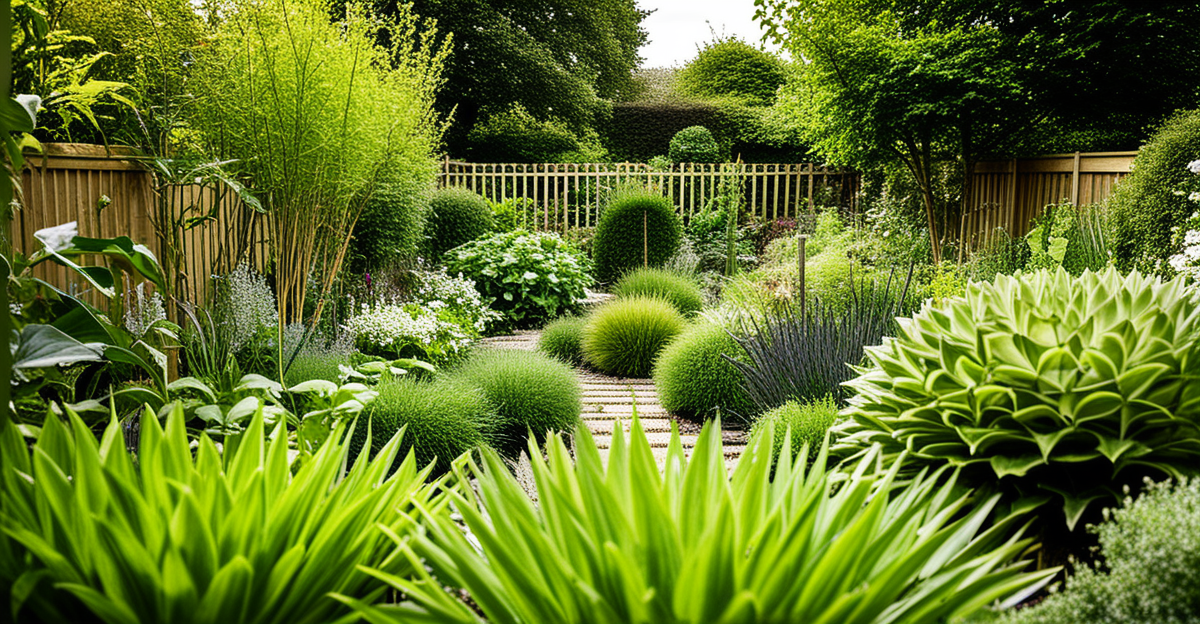Essential Principles of a Sustainable UK Garden
Creating a sustainable garden in the UK requires understanding key elements suited to the local climate. Central to sustainable gardening is maintaining biodiversity and supporting ecosystem health. This means planting native species that thrive naturally, which reduces the need for excessive watering or chemical treatments. Native plants also foster healthy insect populations, crucial for pollination and soil vitality.
Balancing aesthetic appeal with environmental responsibility involves thoughtful eco-friendly garden design. For example, incorporating layers of plants at different heights creates visual interest while providing habitats for wildlife. A sustainable garden flourishes without harming the environment by using natural compost and avoiding peat-based soils, ensuring soil health over time.
This might interest you : How Can We Transform Our Living Space to Reflect UK Heritage?
Water conservation is another critical principle. Sustainable UK gardens often include rainwater harvesting and drought-resistant plants. These methods align with sustainable gardening goals by reducing reliance on mains water.
In summary, the essential principles encompass respecting local climate challenges, encouraging biodiversity, and combining beauty with eco-conscious methods. Embracing these ideas helps gardeners create resilient, vibrant spaces where nature and design coexist harmoniously.
This might interest you : What are the top eco-friendly home improvements for UK residents?
Water-Saving Innovations for the UK Garden
Water conservation is essential in sustainable gardening, especially given the variable UK rainfall. One of the most effective methods is rainwater harvesting, which involves collecting rainwater from roofs into barrels or tanks. This stored water can then be used to irrigate plants during drier periods, reducing reliance on mains water.
Implementing drought-resistant gardening by selecting plants suited to withstand dry spells is another vital technique. UK garden water-saving can be enhanced by incorporating species that naturally thrive with less frequent watering, such as lavender or sedum.
Efficient irrigation systems also play a key role. For instance, drip irrigation targets water directly at plant roots, minimizing waste. Additionally, greywater recycling – reusing water from baths or sinks – can be integrated carefully into garden watering, although this requires consideration of water quality and local regulations.
Together, these water conservation strategies promote healthier, more resilient gardens while supporting broader sustainable gardening goals. They ensure UK sustainable gardens not only survive but flourish through changing weather patterns, making water-saving innovation a cornerstone of eco-friendly garden design.
Essential Principles of a Sustainable UK Garden
Sustainable gardening in the UK hinges on eco-friendly garden design that respects the local climate while promoting biodiversity. Core elements include planting native UK species well adapted to regional weather patterns. These plants require less intervention, reducing water use and chemical treatments, which supports overall ecosystem health. Native plants also attract essential pollinators, cultivating a balanced wildlife garden.
Balancing aesthetic appeal with environmental responsibility means choosing diverse plant layers and textures that provide habitats for insects, birds, and small mammals. This diversity enhances soil quality and encourages natural pest control, aligning with UK sustainable gardens’ goals. Gardeners should aim for a design that is both visually pleasing and functional, addressing long-term sustainability rather than quick fixes.
Another fundamental principle is maintaining healthy garden habitats through thoughtful layout and plant selection. This includes avoiding invasive species and prioritizing organic techniques in garden care. Careful planning decreases maintenance needs and supports climate resilience. By integrating these sustainable gardening practices, gardeners contribute to vibrant, eco-conscious outdoor spaces that thrive in the UK’s varied environment.
Sustainable Gardening for a Thriving UK Garden
Sustainable gardening in the UK demands adapting to local climate challenges while promoting ecosystem health through eco-friendly garden design. A core aspect is selecting plant species that naturally suit UK conditions, which reduces the need for extra watering and chemicals. This choice supports biodiversity by attracting beneficial insects and birds, fostering a balanced, resilient garden ecosystem.
Balancing visual appeal with environmental responsibility involves layering plants of varying heights and textures. Such design not only creates an inviting space but also provides habitats that support diverse wildlife. Incorporating native plants ensures these habitats thrive and enhances soil quality organically.
Practicing sustainable gardening means thinking long term: using organic methods, avoiding invasive species, and maintaining soil vitality without synthetic inputs. This holistic approach aligns with UK sustainable gardens’ goals of sustaining beauty and function over time, minimizing environmental impact.
By prioritizing eco-friendly garden design, focusing on biodiversity, and respecting local climatic factors, gardeners can develop spaces that are both charming and beneficial to the environment. This ensures UK sustainable gardens remain vibrant and productive through changing conditions.
Essential Principles of a Sustainable UK Garden
Sustainable gardening in the UK centers on eco-friendly garden design that respects its often unpredictable climate. The core elements involve selecting plants adapted to local weather, which reduces the need for excessive watering and chemical inputs. This approach directly benefits biodiversity by supporting the insects and animals integral to a healthy garden ecosystem.
Maintaining ecosystem health goes beyond plants. It includes nurturing soil vitality and encouraging natural pest control mechanisms. For example, diverse planting layers—from ground covers to shrubs—create microhabitats that enhance ecological balance. This method promotes long-term garden resilience, essential in UK sustainable gardens facing climate variability.
Balancing aesthetic appeal with environmental responsibility is crucial. Gardens can be both beautiful and functional by integrating native species and designing habitats that invite wildlife. A well-planned sustainable garden aligns visual harmony with ecological benefits, ensuring vibrant green spaces that support biodiversity and reduce environmental impact.
Ultimately, the principles of sustainable gardening in the UK demand a thoughtful fusion of nature-friendly practices and design, producing thriving gardens that work in harmony with their environment.
Essential Principles of a Sustainable UK Garden
Sustainable gardening in the UK demands an eco-friendly garden design tailored to its unique climate. Core elements include choosing plants that adapt well to seasonal changes and variable rainfall. This reduces water and chemical needs, lowering environmental impact. Focus on biodiversity is essential: diverse plant species attract pollinators and beneficial wildlife, enhancing ecosystem health and natural pest control.
How does sustainable gardening balance beauty with responsibility? It achieves this by blending aesthetics and function. Layering plants of differing heights and textures creates visually pleasing, wildlife-friendly spaces. This approach supports habitats for insects, birds, and small mammals while maintaining soil vitality.
Why prioritize biodiversity in UK sustainable gardens? Biodiversity ensures resilience, promoting ecosystem stability amid climate fluctuations. Native flora forms the foundation of these gardens, limiting invasive species and fostering local wildlife.
In practice, sustainable gardening means designing thoughtfully so that beauty, ecology, and practicality coexist. Through forethought in plant selection and habitat creation, a UK garden becomes a vibrant ecosystem that thrives sustainably. This holistic method brings lasting enjoyment without compromising nature’s balance.
Essential Principles of a Sustainable UK Garden
Sustainable gardening in the UK relies on eco-friendly garden design tailored to local climate challenges. Core elements include selecting plants adapted to regional conditions, which reduces water use and chemical applications. This thoughtful choice fosters UK sustainable gardens that require less maintenance while supporting ecosystem health.
Biodiversity plays a vital role. Gardens rich in diverse species encourage natural pest control and attract pollinators essential for plant reproduction. By integrating native plants and creating layered planting schemes, gardeners enhance habitats for insects, birds, and small mammals. This supports an ecological balance crucial for long-term garden resilience amid climate variability.
Balancing visual appeal with environmental responsibility means gardens should be both beautiful and functional. Combining aesthetics with sustainability includes prioritising natural soil vitality and avoiding invasive species. Incorporating multi-height plantings not only boosts habitat diversity but also adds texture and interest.
In essence, sustainable gardening in the UK is about harmonising ecological principles with landscape design. This integration ensures outdoor spaces are thriving, resilient, and expressive of nature’s diversity, creating truly sustainable gardens that respect and enrich their environment.







